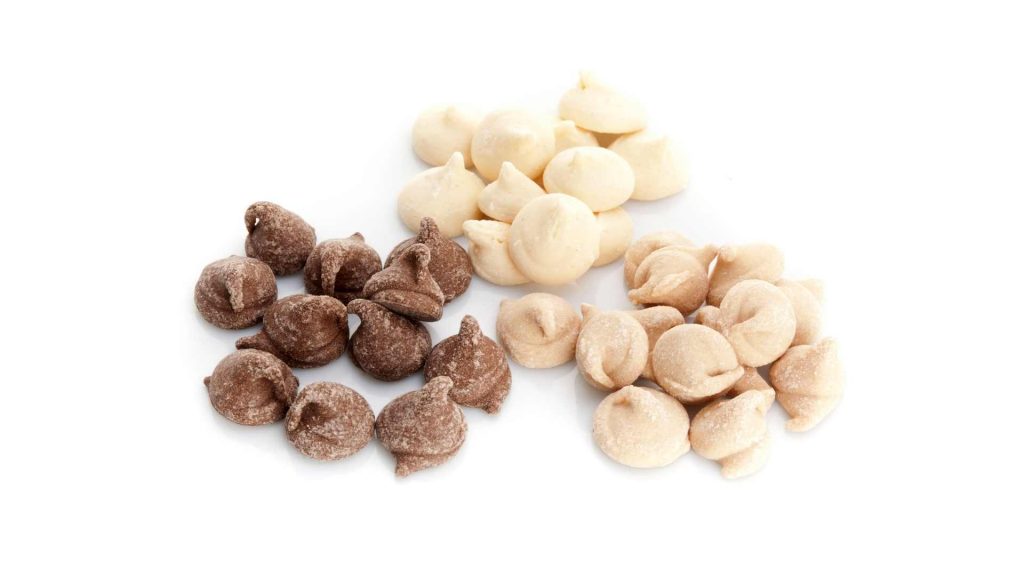Is Chocolate Poisonous to Dogs?
Chocolate – the sweet poison. Yes, chocolate can even kill dogs! It contains the substance theobromine, which dogs can only break down very, very slowly, and so small amounts of chocolate are often toxic for our four-legged friends, which is why we need to act quickly. That means: off to the nearest vet!
In addition to the theobromine, chocolate also contains small amounts of caffeine, which is also toxic to dogs and can make poisoning worse.
Theobromine poisoning is one of the most commonly seen intoxications in dogs and cats by veterinarians. Cases of chocolate poisoning in four-legged friends increase, especially at Christmas and Easter.
No Chocolate For Dogs: What Is Theobromine?
Theobromine belongs to the psychotropic substances belonging to the group of stimulants. Chemically, it is an alkaloid from the methylxanthine group and is similar to caffeine. Just like caffeine, theobromine has a stimulating effect on the nervous system and leads to its overstimulation, which can result in severe nervousness, tremors, cramps, tachycardia and in the worst case even death.
Theobromine is found in plants such as tea plants, cola trees and the cacao tree. Because this alkaloid is found in the cocoa bean, the darker the chocolate, the more theobromine it contains. It was first isolated from the cocoa bean in 1841.
Dark chocolate contains 3-10 grams of theobromine per kilogram of chocolate. Milk chocolate 0.6 – 4 grams per kilogram of chocolate – thus significantly less. Cocoa beans are not usually used to make white chocolate, which is why it does not contain theobromine.
The metabolism of dogs and of course cats is slightly different than that of humans. They lack certain enzymes, which is why theobromine, among other things, can only be broken down slowly.
Humans, but also rats and mice, have enzymes that split theobromine in the liver, which is why it can be broken down again relatively quickly. Dogs, cats and horses lack these enzymes. The alkaloid thus remains in their organism much longer and the toxic effects can unfold.
In dogs, the half-life of this alkaloid is around 17.5 hours, which means that after 17.5 hours, half of the venom is still in its body. After 35 hours, a quarter of the amount of poison originally ingested is still in the animal’s body.
What are the symptoms of chocolate poisoning?
Chocolate poisoning can manifest itself in the form of a harmless stomach upset with diarrhea and vomiting, but also tremors, restlessness, seizures or even cardiac arrhythmias and internal bleeding and death, which usually occurs within the first 12 hours after consumption. Depending on the dose, the symptoms can spread to the circulatory or central nervous system and, in the worst case, lead to death after 12 to 36 hours.
The first symptoms usually appear within the first two to four hours and are usually expressed as an increased feeling of thirst, diarrhea and vomiting. Other symptoms include hyperactivity, restlessness, tachycardia (palpitations), breathing problems and disturbances in vigilance.
What to do if a dog ate chocolate
First of all: keep calm and act calmly on the dog, because panic helps nobody. It is important for the attending physicians to know what type of chocolate was eaten and how many grams. The weight and size of the affected animal are also important information.
If you suspect the dog has eaten chocolate, you should call the veterinary clinic or trusted veterinarian immediately.
If chocolate has just been eaten, the dog can be given charcoal tablets (which belong in every medicine cabinet, by the way). They help the poison to be excreted in the faeces.
Samples of feces, urine or vomit should be taken to the vet so that they can be examined. If you have any, take the packaging and the rest of the chocolate with you so that the theobromine content can be calculated.
If the animal is unconscious, it must be placed in a stable lateral position and the airways must be kept free (tongue out, make sure that no vomit etc. remains in the mouth).
If poisoning is suspected, never use a mouth sling or similar, because there is an absolute risk of suffocation if you vomit!
If you, as a pet owner, feel unable to drive your own car due to fear and excitement, you should definitely ask someone to drive or take a taxi.
How is chocolate poisoning in dogs treated?
The ultimate goal is to reduce the amount of toxins in the body. If the dog is in good condition and above all conscious, the animal is given medication that provokes vomiting. This removes theobromine from the stomach that has not yet been absorbed. However, the four-legged friend must be fully conscious for this and must not be too weak, otherwise there is a risk that the animal will aspirate vomit, i.e. breathe it in and this will damage the lungs. Activated charcoal can also help and is often given.
In order to accelerate the elimination of toxins via the kidneys, the four-legged friend is given intravenous infusions. This forced diuresis also dilutes the blood level of theobromine.
Severe symptoms such as seizures are treated and relieved with medication.
If medical intervention takes place quickly, i.e. within the first four hours after eating the chocolate, the dog has a good chance that everything will be fine again. However, if the central nervous system is already impaired and neurological symptoms have occurred, the prognosis is less favourable.
What amounts are toxic?
Toxicity will vary depending on the type of chocolate, the amount eaten and the size/weight of the dog. Dark chocolate, dark chocolate and cooking chocolate contain a lot of theobromine and are therefore very toxic. The individual sensitivity of the dogs also plays a role.
Table: Which chocolate has how much theobromine?
| Chocolate variety | theobromine content |
|---|---|
| milk chocolate | 1.5-2 mg/g |
| Dark chocolate | 5-8 mg/g |
| cooking chocolate | 14-16 mg/g |
| cocoa powder | 14-26 mg/g |
| raw cocoa | 18-35 mg/g |
| 70% chocolate | 20 mg/g |
| 90% chocolate | 26 mg/g |
How can I prevent theobromine poisoning?
The most important thing is probably the correct storage of food. Chocolate and any other food that can cause poisoning must be kept out of the reach of pets.
Increased awareness is required especially at Christmas and Easter, when chocolate poisoning is most common. Care must be taken to ensure that no sweets are left unattended.
As an animal owner, it is of great importance to be sufficiently informed about food and other things that can be toxic to our darlings and to pass this knowledge on to everyone else in their own environment, so that nobody gets the idea to charge the animal anything give.
Dogs should learn not to accept anything from strangers or eat anything off the floor. Even if it is tedious and requires a lot of patience, this can be trained in any dog.
Dog chocolate – probably the sweetest temptation since there are treats

There really is chocolate for dogs!
Although dog chocolate contains a reduced amount of cocoa and sugar, it is similar to real chocolate. Dog chocolate consists primarily of milk and dairy products, oils and fats, sugar, cocoa and vegetable by-products. Vitamins are often added as well.
Thus, by and large, dog chocolate only contains substances that four-legged friends do not need, but rather even harm them. Just as it would be better for us humans if we avoided chocolate, our four-legged friends should also keep their paws off dog chocolate. This is definitely not an everyday treat.

